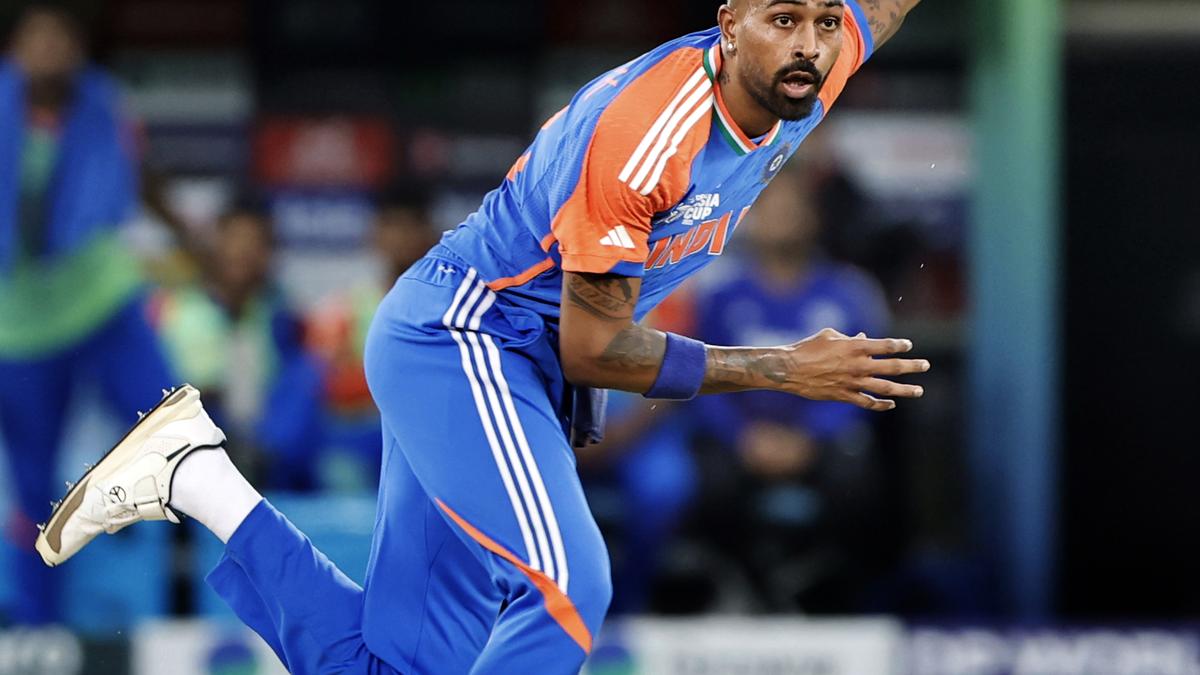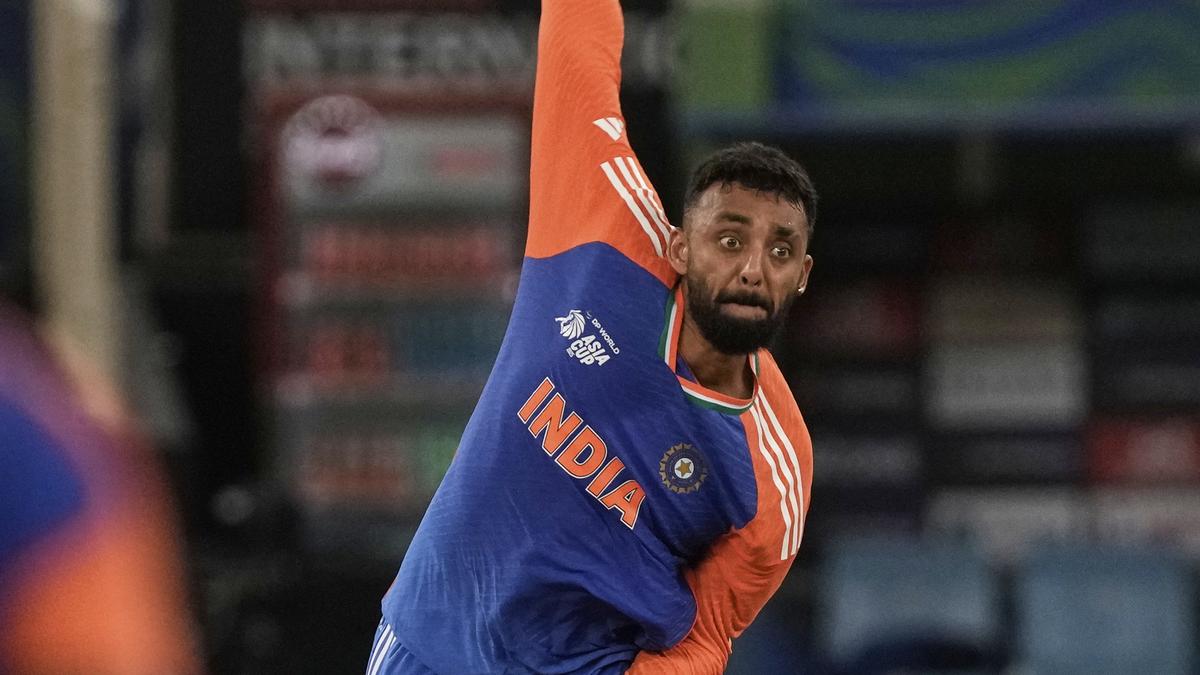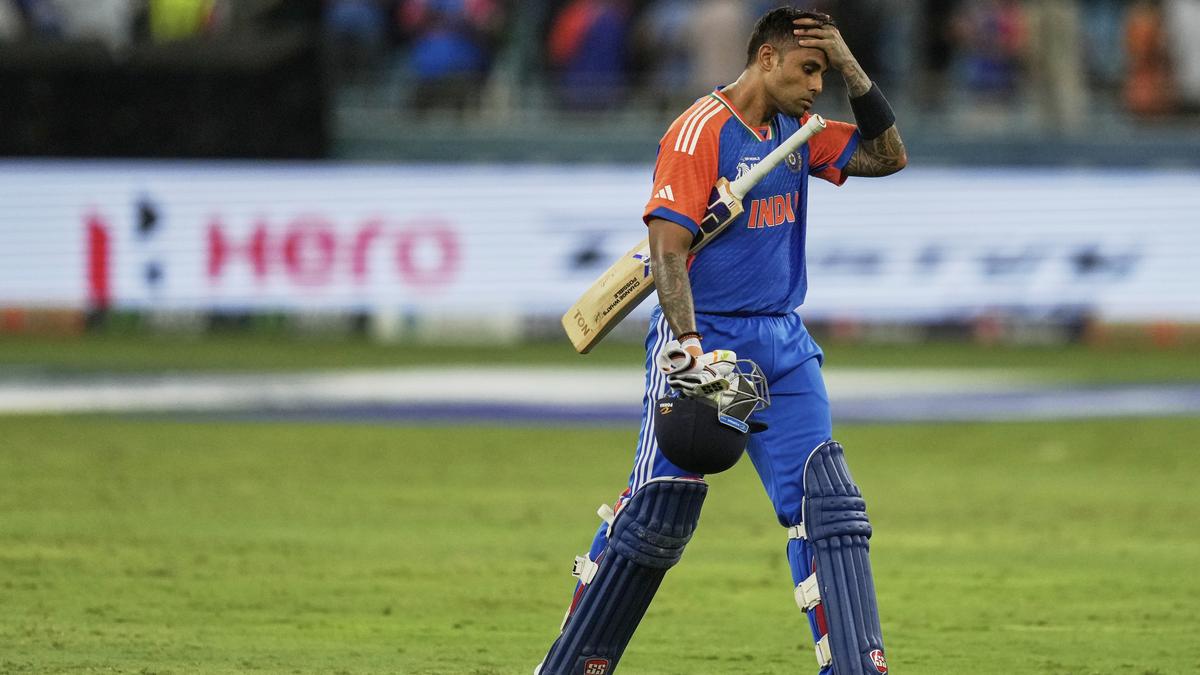It’s been a quiet T20 Asia Cup for Hardik Pandya. That will change over the next week and more but for now, the maverick all-rounder has bowled four overs, taken one wicket and held two catches. He hasn’t even been required to don his pads; India have won their opening Group A fixtures, against UAE and Pakistan, by nine and seven wickets respectively.
The bit part Hardik has played hitherto is no reflection on his abilities. If he has been required to send down only half his allotment of overs, it’s largely due to India’s investment in spin, which is paying off handsomely. Hardik took the new ball ahead of Jasprit Bumrah in both outings. Needed for just a solitary over in the UAE opener, he bowled a two-over first spell against Pakistan, dismissing Saim Ayub with the first legal delivery of the match, and was taken for 16 in the last of the 20 overs, Shaheen Afridi getting stuck into him with successive leg-side sixes.
Hardik fancies the short ball as a wicket-taking option, which is no surprise given how much belief he has in himself. The ploy has worked numerous times, but it has also cost him and his team quite a few runs. The player and the leadership group are both comfortable with the trade-off when others around him are getting the job done. And they certainly are – after all, India have won 19 of their last 22 matches in the last 14 and a half months.
India are viewing the Asia Cup as an end in itself, but also as a means to an end. The immediate objective is to win the tournament, retain the trophy clinched two years ago in the 50-over format in Colombo and reiterate why they are the top dogs in the 20-over game. The larger-picture aim revolves around sifting through the resources to zero in on the 15 that the decision-making core will rely on to mount a successful defence in February-March of the World Cup won last year in the Caribbean. In some ways, both those goals are in alignment, in others, they aren’t. What everyone agrees on is that Hardik is integral to India’s plans, here at the continental faceoff as well as at the larger extravaganza to be hosted by India and Sri Lanka early next year.
A unique and much sought after entity in Indian cricket, Hardik is a genuine all-rounder, but an all-rounder with a difference, nevertheless. Blessed in the last several years with a plethora of spinners who are more than accomplished with the bat – R Ashwin, Ravindra Jadeja, Axar Patel, Washington Sundar – India have had lesser success in unearthing multi-skilled players who can ally big-hitting with brisk medium pace. Hardik is a massive answer to their prayers, therefore. He is more than just brisk medium-pace and he can hit the ball a long, long way with effortless ease, courtesy a grand amalgam of brute power and impeccable timing.
In the Asia Cup now, and at the 50-over Champions Trophy in these same lands some seven months back, Hardik’s presence has enabled India to play the conditions superbly without compromising on core strength. In the longer white-ball iteration, India fielded four specialist spinners in an ODI for the first time in their league fixture against New Zealand in February, an approach they stuck with for the semifinal against Australia and the final, also against the Kiwis. They could afford to play Axar, Jadeja, Kuldeep Yadav and Varun Chakaravarthy even in Bumrah’s injury-enforced absence because Hardik could slot in as the second pacer alongside Mohammed Shami.
Statistics will suggest that with the ball – and with the bat, to which we shall come shortly – the 31-year-old had an unremarkable tournament. But then again, that’s what statistics do, don’t they? They only tell half the story until you scratch the surface. Varun and Shami finished with nine wickets apiece, Kuldeep had seven and left-arm finger-spinners Axar and Jadeja matched each other in wickets (5) and economy (4.35). Hardik, one of 10 players to figure in all the five matches played by Rohit Sharma’s all-conquering unit, picked up four wickets at the highest economy rate of the seven bowlers India summoned – Harshit Rana had to be left out after the second league tie once India decided to unleash Varun.
Would India have been happier had Hardik gone at less than 5.83 runs per over? For sure. But it wasn’t only because of his bowling that he was in the XI. There is an equally impressive secondary (or is it primary?) facet that thrusts him into the category of near-indispensable.
Until his protesting body dictated otherwise, Hardik seemed destined for a long, successful career in the five-day game. Early evidence of his comfort against the red ball came on debut in Galle in July 2017, when he smacked a 49-ball 50 in his first innings. Two innings later, he unleashed mayhem while adding 66 for the last wicket with Umesh Yadav, hammering seven sixes on his way to 108 off a mere 96 deliveries in Pallekele. His next Test innings, five months later, was equally jaw-dropping. While the rest of the celebrated batting unit collapsed around him with Cheteshwar Pujara’s stodgy 26 the next highest, Hardik batted with flair and authority in Cape Town against a rampaging South African attack comprising Dale Steyn, current India bowling coach Morne Morkel, Vernon Philander and Kagiso Rabada.
Striding in with India reeling at 76 for five in response to the hosts’ 286 at beautiful Newlands, Hardik was unstoppable. During a 99-run eighth-wicket association with Bhuvneshwar Kumar, Hardik lay into the four-pronged pace attack. Fours cascaded off his willow with unerring regularity and he was well on course for a second successive hundred until attempting to ramp Rabada and edging to Quinton de Kock behind the sticks. Hardik’s 93 came off a mere 95 deliveries, studded with 14 fours and a six. As far as counter-attacking efforts with the backs to the wall go, this was right up there with the best.
As a Test bowler, Hardik was just getting used to the demands and the nuances on India’s next overseas tour, to England in the summer of 2018. Three for 66 in a losing cause at Lord’s was backed up by five for 28, coming on as the fifth bowler, in the next fixture in Nottingham. In a wonderful display of swing bowling under overcast skies at Trent Bridge, Hardik nicked off Joe Root, Jonny Bairstow, Chris Woakes and Adil Rashid before trapping Stuart Broad in front, taking just five overs for his maiden – and only – five-wicket haul. And he did so not by delivering at 125-130 kmphs and letting the conditions do the rest, but by repeatedly touching 140, keeping batters looking for release from Bumrah, Shami and Ishant Sharma honest.
Hardik’s cup of joy spilled over with a run-a-ball 52 in the second innings as India surged to a 203-run victory. Few, Hardik included, would have even suspected at the time that he’d figure in just one further Test before stepping away from the five-day format. 532 runs and 17 wickets from 11 Tests don’t seem flash, not viewed through the narrow prism of numbers, but one of the great shames as far as Indian cricket is concerned is how quickly a Test career that promised so much ended in unfortunate circumstances.
Where one door slammed shut due to reasons beyond anyone’s control, Hardik emerged as a key figure in the white-ball scheme of things. His versatility with the ball and his pyrotechnics with the bat – evidenced by averages of 32.82 and 27.87 to go with strike-rates of 110.89 and 141.67 in 94 ODIs and 116 T20Is in addition to 91 and 95 wickets respectively – has encouraged different team managements to play the conditions seamlessly while losing nothing in overall strength. Hardik has proved his worth repeatedly, not least in the final of the T20 World Cup last year when his dismissal of Heinrich Klaasen catalysed India’s stirring charge to the title when all seemed lost. In the Champions Trophy, he settled tense chases in the semis and finals against Australia and New Zealand with unfettered ball-striking. Consecutive sixes off Adam Zampa with the semifinal delicately balanced alone was worth more than 99 tournament runs, strike-rate 106.45 (easily the highest among the Indians).
Given the munificence of India’s top-order, Hardik hasn’t had a lot to do in T20I cricket in the last year or so. Slotting in between Nos. 5 and 7, he has, however, pulled his weight whenever required; two of his last three knocks have produced 40 (35b) and 53 (30b) against England at home in January. At the ICC Academy where India have been putting in four-hour training stints, Hardik is among those honing his range-hitting skills that has seen many a white ball disappear into the night sky.
Hardik gives the impression that he doesn’t care what the world thinks of him, but he is a deeply passionate and proud individual whose recently acquired blond crop of hair isn’t so much a sign of rebellion as living life on his own terms so long as it doesn’t impact others adversely. He had justifiable aspirations of succeeding Rohit as the T20I skipper after the World Cup, but that honour has been bestowed on Suryakumar Yadav. It must have come as a huge blow, but Hardik has kept his thoughts to himself while plunging whole-heartedly to supporting his captain in all ways conceivable.
He had a difficult IPL 2024 when he was booed across the length and breadth of the country upon replacing the popular but deposed Rohit as the Mumbai Indians captain. There was a certain poignancy to Hardik’s immense contribution to India’s victory in the World Cup final, which included last-over wickets of David Miller and Rabada. The kiss on the cheek from Rohit in the middle of Hardik’s live interaction with the host broadcaster immediately after India’s remarkable heist must have come as a particularly soothing balm. Don’t let Hardik’s nonchalant exterior fool you. He is every bit as sensitive as they come.






